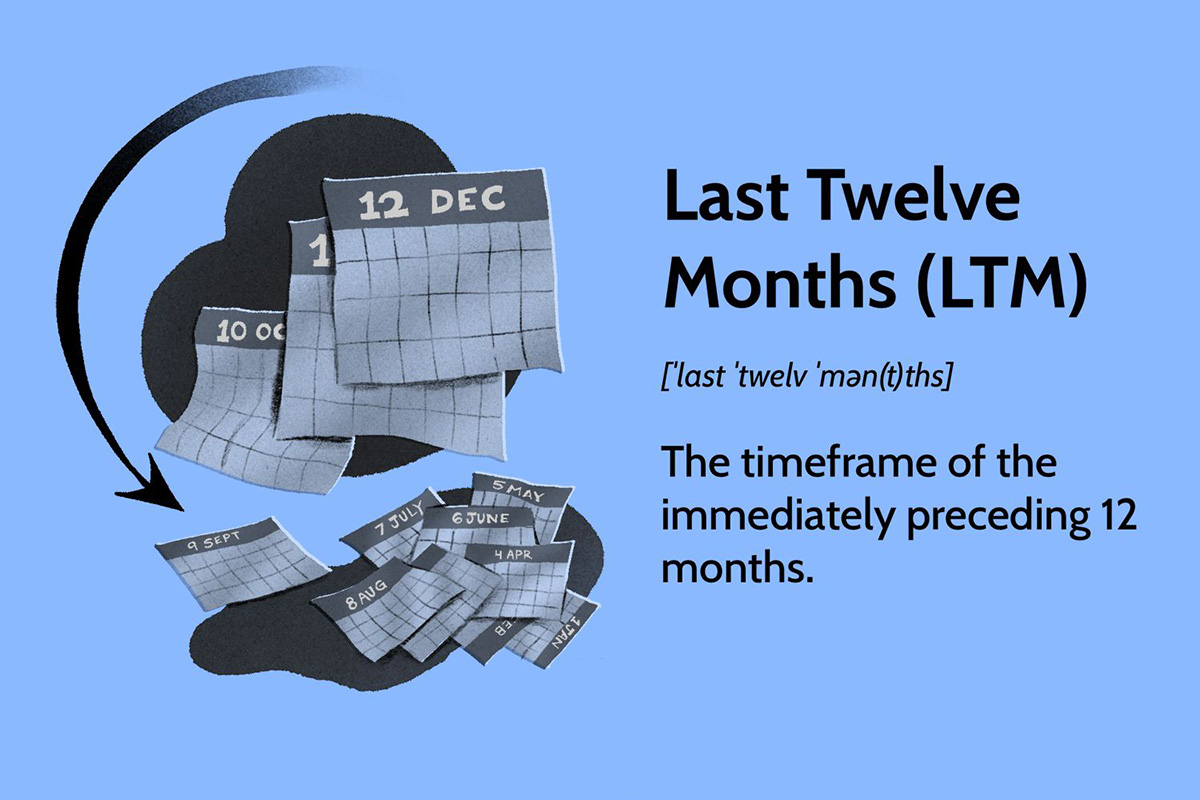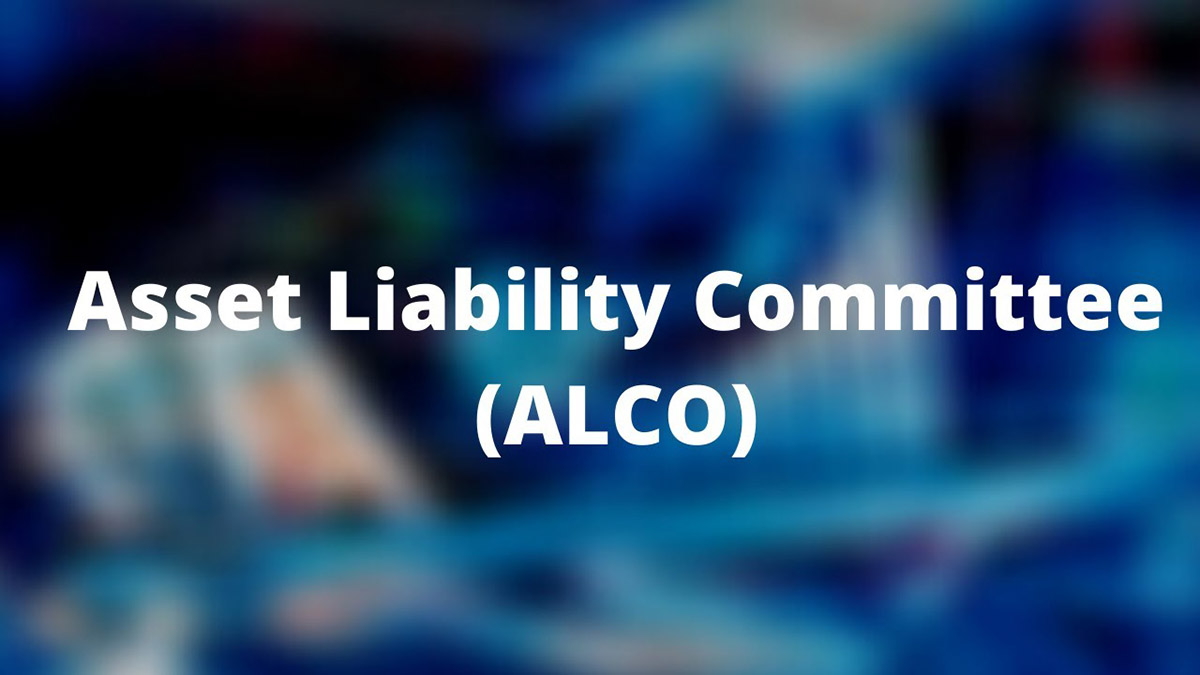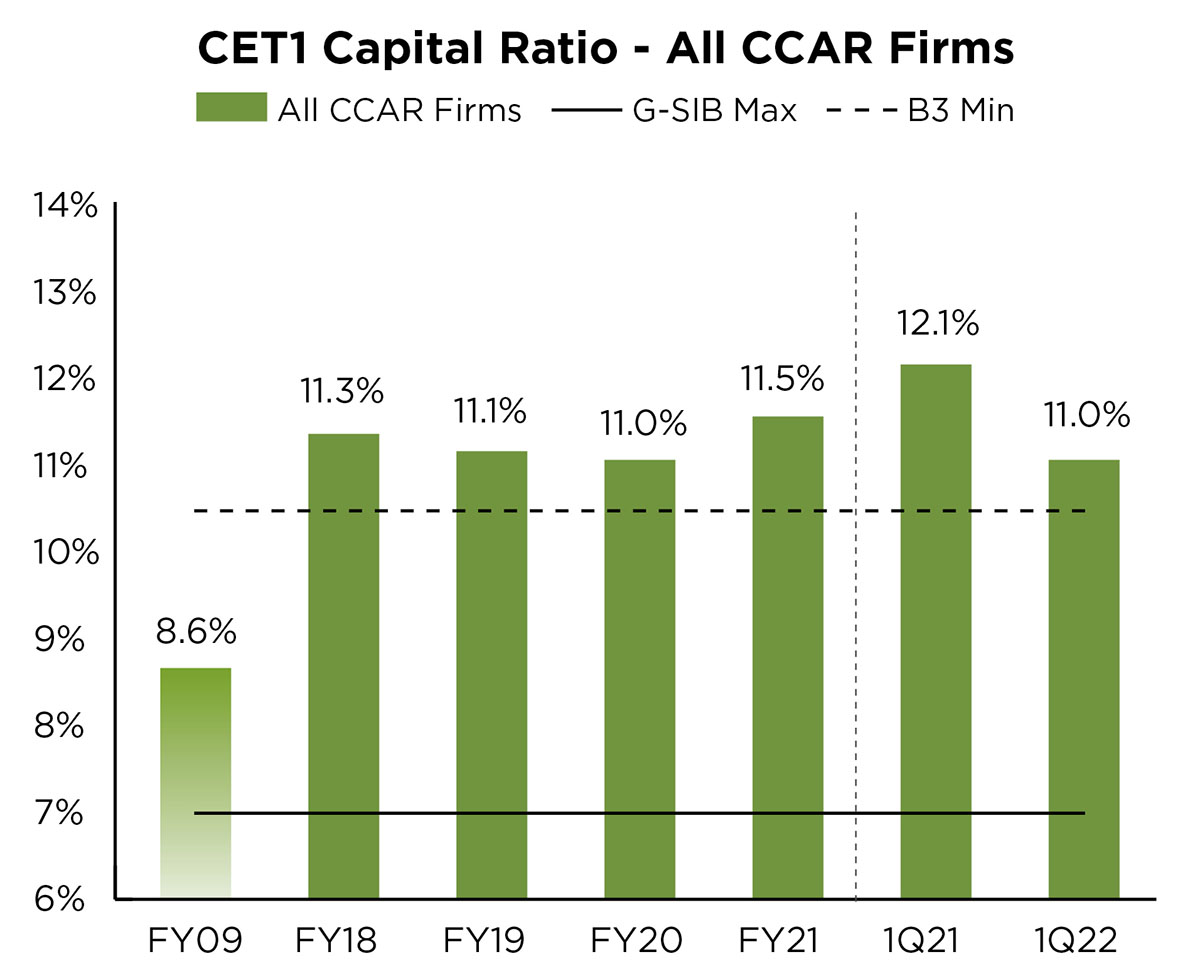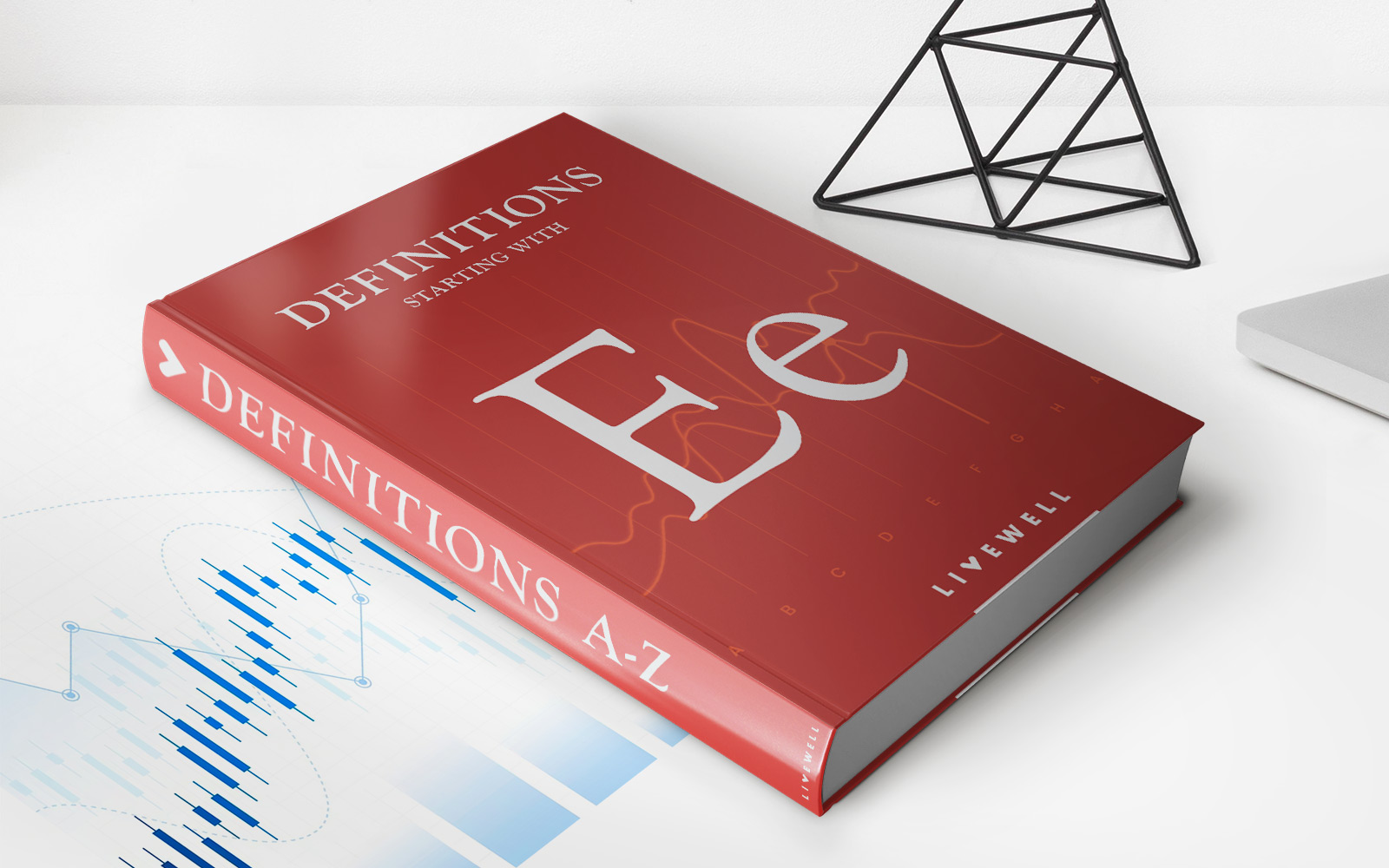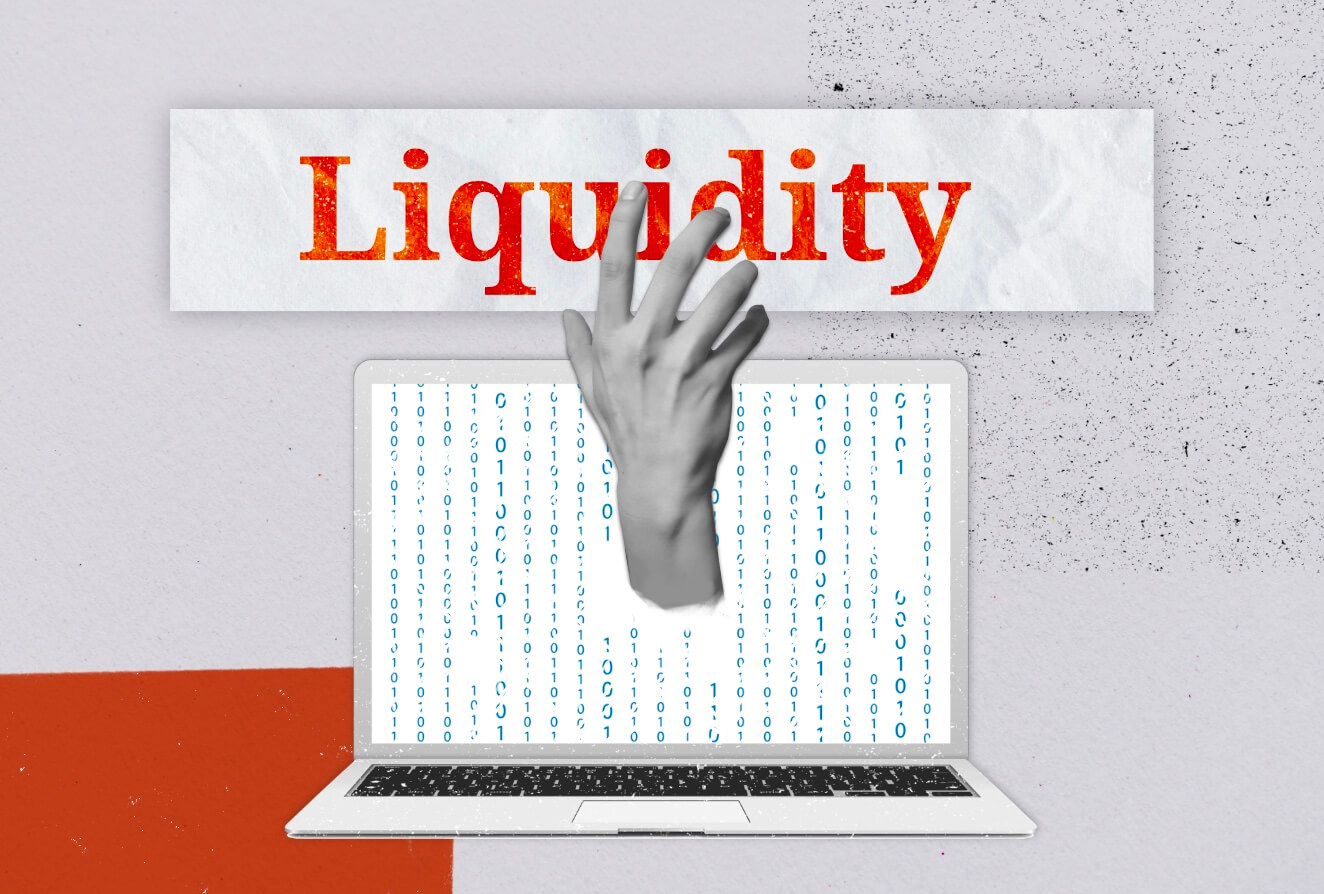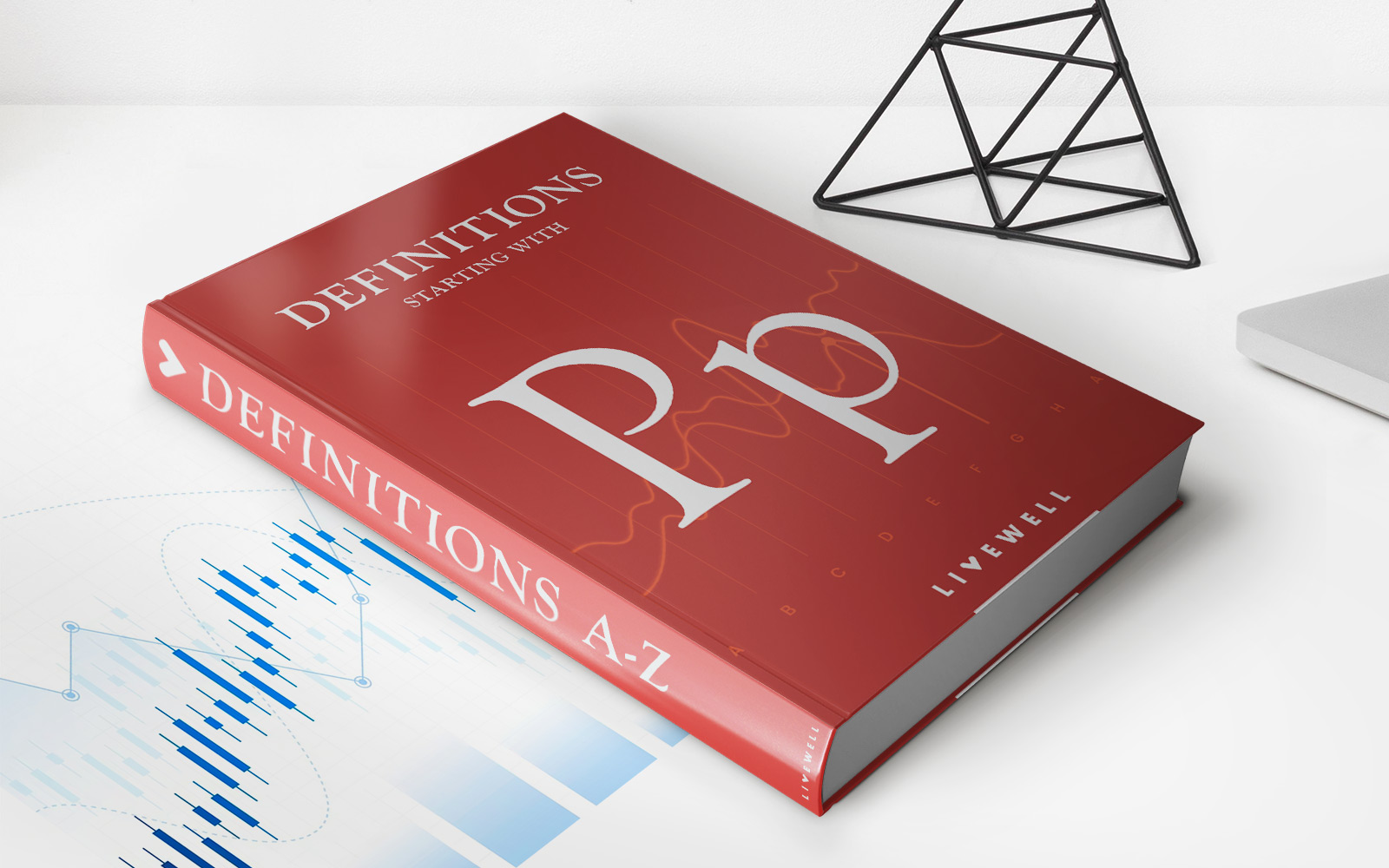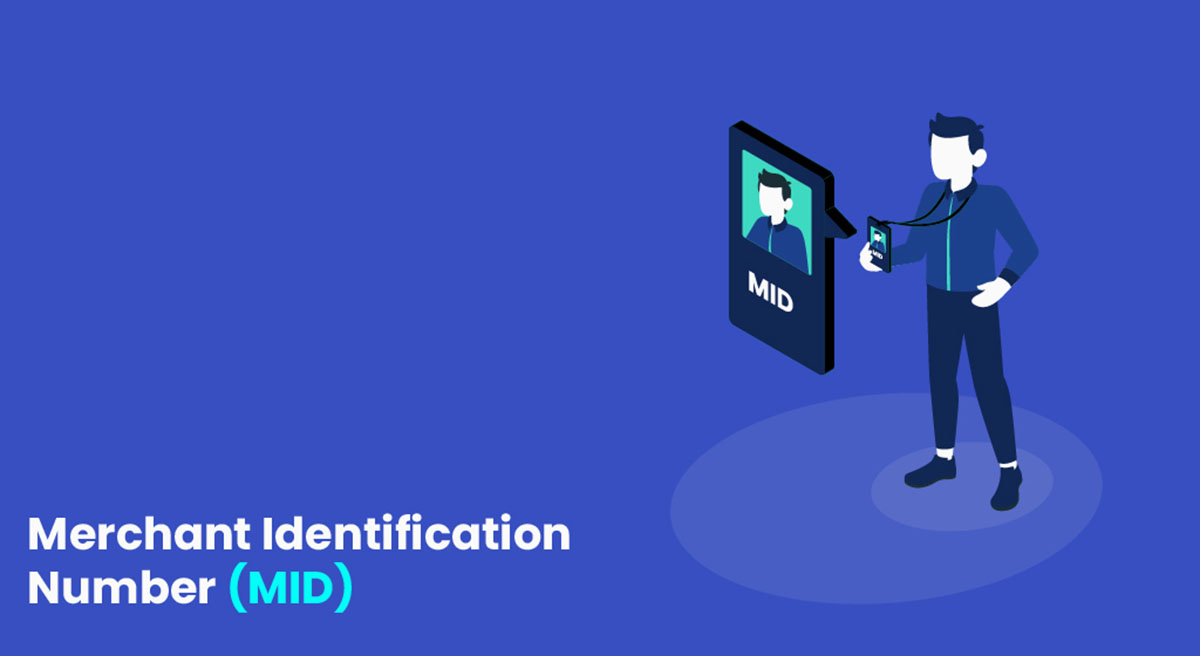

Finance
What Does MID Stand For In Banking
Published: October 11, 2023
Discover the meaning of MID in the banking industry and its importance in finance. Learn how MID impacts financial transactions and safeguards against fraud.
(Many of the links in this article redirect to a specific reviewed product. Your purchase of these products through affiliate links helps to generate commission for LiveWell, at no extra cost. Learn more)
Table of Contents
Introduction
In the world of banking, there are many acronyms and terms that can be quite confusing to the average person. One such term is “MID,” which stands for Merchant Identification Number. While this may sound technical and complex, understanding what MID means and its importance in banking is essential for businesses and individuals alike.
At its core, the Merchant Identification Number (MID) is a unique identifier assigned to merchants or businesses that engage in financial transactions. It serves as a way to differentiate one business from another and aids in the smooth processing of transactions. Think of it as a social security number for businesses in the banking world.
The MID plays a crucial role in various aspects of banking, including payment processing, fraud prevention, and financial reporting. It allows banks and financial institutions to track and monitor transactions, ensuring the security and integrity of the overall system.
While MIDs are primarily associated with e-commerce and online transactions, they are also used in physical retail settings where card payments are accepted. The use of MIDs has become increasingly important with the rise of digital payments and the need for secure and efficient transaction processing.
In the following sections, we will explore the importance of MIDs in banking, the different types of MIDs, their benefits and common uses, security measures associated with MIDs, as well as the challenges and regulatory guidelines that come with using them.
Definition of MID
A Merchant Identification Number (MID) is a unique identifier assigned to a business or merchant by a acquiring bank or payment processor. It is a critical component of the payment processing infrastructure and is used to identify and track individual merchants in the banking system.
The MID serves as a way to differentiate one business from another and ensures that each transaction is properly attributed to the correct merchant. It is typically a combination of numbers or alphanumeric characters that is associated with a specific merchant account.
When a business applies for a merchant account, either through a bank or a payment processor, they are assigned a unique MID. This number is included in every transaction made by the merchant, allowing the bank or processor to accurately process and allocate funds.
The MID is an essential element in the payment ecosystem as it enables effective communication and coordination between various parties involved, such as the merchant, the acquiring bank, and the card networks (e.g., Visa, Mastercard).
It is important to note that each MID is unique to a specific merchant and cannot be shared or used by another business. This ensures that each transaction is properly attributed and allows for accurate reporting and reconciliation.
In addition to the MID, merchants are often assigned other identifiers, such as a Terminal Identification Number (TID) or a Payment Service Provider ID (PSPID), depending on the specific requirements of the payment processor or acquirer.
Overall, the MID is crucial for efficient and secure payment processing, enabling the smooth flow of funds between merchants, acquiring banks, and customers. It plays a vital role in accurately tracking and allocating transactions, reducing the risk of errors and improving the overall integrity of the banking system.
Importance of MID in Banking
The Merchant Identification Number (MID) holds significant importance in the world of banking. It serves as a vital component of the payment processing infrastructure, providing several benefits for both businesses and financial institutions.
One of the key reasons why the MID is important in banking is that it allows for efficient and accurate transaction processing. By assigning a unique identifier to each merchant, banks and payment processors can easily differentiate between various businesses and ensure that each transaction is appropriately tracked and allocated. This helps in reducing errors and streamlining the overall payment process.
Furthermore, the MID plays a crucial role in fraud prevention. By associating transactions with specific merchants, banks and payment processors can monitor and identify any suspicious or unauthorized activity. This enables them to take immediate action to prevent fraud and protect both merchants and customers from potential financial losses.
Another important aspect of the MID is that it facilitates effective financial reporting and reconciliation. With a unique identifier for each merchant, banks can generate accurate reports, detailing the transactions processed by each business. This information is valuable for merchants to analyze their sales and revenue, as well as for financial institutions to assess risk and compliance.
In addition, the MID enables swift and seamless settlement of funds. By having a unique identifier associated with each merchant, banks can easily allocate the funds to the correct account, ensuring that merchants receive their payments promptly. This fosters trust and strengthens the relationship between merchants and financial institutions.
Moreover, the MID provides a level of transparency and accountability in the banking system. With each transaction tied to a specific merchant, it becomes easier to track and audit financial activities, which is especially important for regulatory compliance.
Overall, the MID plays a crucial role in ensuring the smooth processing of transactions, preventing fraud, facilitating accurate financial reporting, enabling swift fund settlement, and promoting transparency and accountability in the banking system. It is an essential component that supports the growth and stability of businesses and strengthens the overall integrity of the financial ecosystem.
Types of MIDs in Banking
In the world of banking, there are different types of Merchant Identification Numbers (MIDs) that serve specific purposes and cater to various types of businesses. These MIDs are designed to meet the unique needs and requirements of different industries and transaction types. Let’s explore some common types of MIDs:
- Retail MIDs: Retail MIDs are primarily used by businesses that operate in physical retail locations, such as brick-and-mortar stores. These MIDs are associated with point-of-sale (POS) terminals or card readers, allowing businesses to accept card payments from customers. They are essential for traditional retail establishments and play a crucial role in tracking and processing transactions.
- eCommerce MIDs: eCommerce MIDs are specifically designed for businesses that operate online stores or engage in digital transactions. These MIDs are associated with online payment gateways, enabling businesses to accept payments securely over the internet. eCommerce MIDs are essential for online retailers and provide a seamless and secure payment experience for customers.
- MOTO MIDs: MOTO stands for Mail Order/Telephone Order, and MOTO MIDs are used by businesses that primarily receive payments through mail or phone orders. These MIDs are associated with virtual terminals or phone payment systems, allowing businesses to accept payments without the need for a physical card present. MOTO MIDs are commonly used by businesses in industries such as catalog sales or call centers.
- High-Risk MIDs: High-Risk MIDs are reserved for businesses operating in sectors that are considered higher risk by banks and financial institutions. These sectors typically involve industries such as online gambling, adult entertainment, or pharmaceuticals. High-Risk MIDs often have stricter underwriting requirements and may be subject to additional scrutiny due to the nature of the business.
- International MIDs: International MIDs are assigned to businesses that operate globally or engage in cross-border transactions. These MIDs are designed to facilitate international payment processing and often include additional features such as multi-currency support and specialized fraud prevention measures. International MIDs are essential for businesses looking to expand their reach and cater to customers in different countries.
It is important for businesses to understand their specific needs and choose the appropriate type of MID that aligns with their industry, transaction types, and growth objectives. This ensures that businesses can efficiently process transactions, offer a seamless payment experience to customers, and comply with industry regulations.
Benefits of MIDs in Banking
Merchant Identification Numbers (MIDs) offer a range of benefits for businesses and financial institutions in the banking world. Let’s explore some key advantages of MIDs:
- Efficient Transaction Processing: The use of MIDs allows for the efficient processing of transactions. Each merchant is assigned a unique identifier, enabling banks and payment processors to accurately allocate funds and track transactions. This reduces errors and ensures that funds are attributed to the correct merchant account in a timely manner.
- Fraud Prevention: MIDs play a crucial role in fraud prevention. By associating transactions with specific merchants, banks and payment processors can monitor and detect suspicious or unauthorized activity. They can implement sophisticated fraud prevention measures and quickly identify potential threats, protecting both merchants and customers from financial losses and fraudulent transactions.
- Financial Reporting and Reconciliation: MIDs enable accurate financial reporting and reconciliation. Each transaction is tied to a specific merchant’s account, making it easier for financial institutions to generate detailed reports. This information helps merchants analyze their sales, track revenue, and make informed business decisions. It also aids financial institutions in assessing risk and compliance, ensuring the integrity and transparency of financial records.
- Swift Fund Settlement: With MIDs, the settlement of funds becomes swift and seamless. Each merchant is assigned a unique identifier, allowing banks to efficiently allocate funds to the correct account. This ensures that merchants receive their payments in a timely manner, strengthening their cash flow and fostering a positive relationship with financial institutions.
- Enhanced Tracking and Accountability: MIDs provide enhanced tracking and accountability in the banking system. Each transaction is linked to a specific merchant, making it easier to track and audit financial activities. Financial institutions can ensure compliance with regulations, monitor revenue streams, and identify any irregularities or potential misuse of funds. This creates transparency and fosters trust within the banking ecosystem.
- Increased Customer Confidence: The use of MIDs contributes to increased customer confidence. Customers are more likely to trust businesses that have a structured payment process in place. With the assurance that their transactions are securely processed and linked to a specific merchant, customers feel more confident in making purchases, leading to stronger customer relationships and repeat business.
Overall, MIDs offer numerous benefits in terms of efficient transaction processing, fraud prevention, financial reporting and reconciliation, swift fund settlement, enhanced tracking and accountability, and increased customer confidence. Utilizing MIDs in the banking system helps create a secure and transparent environment for businesses, financial institutions, and customers alike.
Common Uses of MIDs in Banking
Merchant Identification Numbers (MIDs) have various applications across the banking industry. They play a critical role in streamlining financial processes and facilitating secure transactions. Let’s explore some of the common uses of MIDs in banking:
- Payment Processing: One of the primary uses of MIDs is in payment processing. They enable businesses to accept various forms of electronic payments, including debit and credit card transactions. MIDs are associated with payment gateways or point-of-sale terminals, allowing seamless and secure transaction processing for both online and physical retail environments.
- Fraud Prevention: MIDs are instrumental in fraud prevention efforts. They enable banks and payment processors to monitor and detect suspicious transactions by associating them with specific merchants. By analyzing patterns and anomalies, financial institutions can identify potential fraudulent activity and take swift action to mitigate risks and protect both merchants and customers.
- Financial Reporting and Analysis: MIDs play a crucial role in generating accurate financial reports and conducting analysis. Each transaction linked to a specific MID allows financial institutions and merchants to track sales, revenue, and other financial metrics. This information helps businesses understand their performance, make informed decisions, and comply with financial regulations.
- Reconciliation and Settlement: MIDs facilitate the reconciliation and settlement of funds for merchants. Financial institutions can easily allocate funds to the correct merchant account using the unique MID, ensuring prompt and accurate settlement. This simplifies the accounting process for businesses and strengthens their cash flow management.
- Customer Relationship Management: MIDs assist in managing customer relationships. By associating transactions with specific MIDs, businesses can track customer purchases, preferences, and behavior. This information enables targeted marketing efforts, personalized customer experiences, and loyalty programs, improving customer satisfaction and retention.
- Regulatory Compliance: MIDs help financial institutions and merchants comply with regulatory requirements. By associating transactions with specific MIDs, it becomes easier to track and audit financial activities. This assists in meeting financial reporting standards, anti-money laundering (AML) regulations, and other compliance obligations set by regulatory bodies.
Overall, MIDs serve a wide range of purposes in the banking industry, including payment processing, fraud prevention, financial reporting and analysis, reconciliation and settlement, customer relationship management, and regulatory compliance. They contribute to the efficient operation of banking systems and provide businesses with the tools they need to succeed in today’s fast-paced financial landscape.
Security Measures for MIDs in Banking
Ensuring the security of Merchant Identification Numbers (MIDs) is of utmost importance in the banking industry. MIDs are vulnerable to potential fraud, unauthorized access, and data breaches, which can have severe financial and reputational consequences. Here are some common security measures implemented to protect MIDs in banking:
- Encryption: Encrypting MIDs and transaction data is a critical security measure. Encryption converts sensitive information into an unreadable format, providing an extra layer of protection against unauthorized access. Strong encryption algorithms and protocols are employed to secure the transmission and storage of MIDs.
- Tokenization: Tokenization is another security measure used to protect MIDs. Instead of storing the actual MID, tokens are used as placeholders. These tokens are meaningless to hackers, reducing the risk of theft or misuse of the original MID. Tokenization ensures that even if a data breach occurs, the MIDs remain secure.
- Secure Data Storage: Financial institutions employ secure data storage practices to protect MIDs. This includes implementing robust firewalls, intrusion detection systems, and access controls to prevent unauthorized access to sensitive information. Regular security audits and vulnerability assessments are conducted to identify and address any potential vulnerabilities.
- Multi-Factor Authentication: To enhance the security of MIDs, multi-factor authentication is often employed. This involves requiring more than one form of authentication, such as a combination of passwords, biometric data, or security tokens. Multi-factor authentication provides an additional layer of security and adds an extra step for attackers to bypass.
- Fraud Detection and Monitoring: Financial institutions employ advanced fraud detection and monitoring systems to identify any suspicious activity related to MIDs. These systems analyze transaction patterns, anomalies, and risk factors to detect potentially fraudulent transactions. Real-time alerts and automated blocking mechanisms are in place to prevent fraudulent activities.
- Employee Training and Awareness: Human error can compromise the security of MIDs, so it is crucial to provide regular training and awareness programs for employees. This includes educating staff about phishing scams, malware, and other common security threats. Employees should be trained on best practices for handling MIDs and sensitive customer information.
- Compliance with Security Standards: Financial institutions must adhere to industry security standards, such as the Payment Card Industry Data Security Standard (PCI DSS). Compliance with these standards ensures that proper security controls and practices are in place to protect MIDs. Regular audits and assessments are conducted to verify compliance.
By implementing these security measures, financial institutions can safeguard MIDs and mitigate the risk of data breaches, fraud, and unauthorized access. Protecting MIDs is an ongoing effort that requires constant vigilance and investment in robust security infrastructure and practices.
Challenges and Risks Associated with MIDs in Banking
While Merchant Identification Numbers (MIDs) play a crucial role in banking, there are also various challenges and risks associated with their use. Understanding and addressing these challenges is essential for ensuring the security and integrity of the banking system. Here are some common challenges and risks associated with MIDs:
- Fraud and Security Threats: MIDs are susceptible to fraudulent activities and security threats. Hackers may attempt to gain unauthorized access to MIDs or use stolen MIDs to conduct fraudulent transactions. Banks and financial institutions need to implement robust security measures, such as encryption, tokenization, and multi-factor authentication, to protect MIDs from these risks.
- Data Breaches: Data breaches pose a significant risk to MIDs and the sensitive customer information associated with them. If MIDs are compromised in a data breach, the consequences can be severe, including financial losses and damage to the reputation of both businesses and financial institutions. Strict security protocols and regular security audits are necessary to prevent data breaches and ensure the protection of MIDs.
- Regulatory Compliance: Compliance with regulatory requirements is a challenge associated with MIDs. Financial institutions need to navigate various regulations and standards, such as the Payment Card Industry Data Security Standard (PCI DSS), to protect MIDs and customer data. Failure to comply with these regulations can result in penalties, legal issues, and reputational damage.
- Technical Infrastructure and Maintenance: Maintaining a robust technical infrastructure for handling MIDs can be a challenge. Financial institutions need to invest in secure and scalable systems that can handle a high volume of transactions while maintaining performance and security. Regular maintenance, system upgrades, and adherence to industry best practices are necessary to ensure the smooth functioning of MIDs.
- Card-Not-Present Transactions: MIDs face unique challenges when it comes to card-not-present (CNP) transactions, such as online or over-the-phone purchases. CNP transactions are more vulnerable to fraud, requiring additional security measures and monitoring to mitigate risks. Financial institutions need to implement fraud detection mechanisms and educate merchants on best practices to reduce the risks associated with CNP transactions.
- Technological Advancements: With the rapid pace of technological advancements, MIDs need to adapt to new payment methods and emerging technologies. The rise of mobile payments, digital wallets, and contactless payments presents both opportunities and challenges for MIDs. Financial institutions need to stay updated with the latest trends and ensure that MIDs can securely handle these new payment methods.
Despite these challenges and risks, it is crucial for banks and financial institutions to proactively address them. By implementing robust security measures, adhering to compliance regulations, investing in secure infrastructure, and staying updated with technological advancements, the risks associated with MIDs can be mitigated, ensuring the safe and reliable functioning of the banking system.
Regulatory Guidelines for MIDs in Banking
The use of Merchant Identification Numbers (MIDs) in the banking industry is subject to regulatory guidelines to ensure the security, transparency, and compliance of financial transactions. These guidelines are established by regulatory bodies and industry standards organizations. Let’s explore some key regulatory guidelines for MIDs in banking:
- Payment Card Industry Data Security Standard (PCI DSS): The PCI DSS is a widely recognized security standard that applies to organizations that handle cardholder data, including MIDs. It establishes requirements for the secure handling, storage, processing, and transmission of cardholder data. Compliance with the PCI DSS is essential for financial institutions and merchants to protect MIDs and customer information from data breaches and fraud.
- General Data Protection Regulation (GDPR): In regions where the GDPR applies, such as the European Union, MIDs must adhere to this regulation regarding the processing, storage, and protection of personal data. GDPR ensures that individuals have control over their personal information, including the MIDs associated with their transactions. Financial institutions must obtain appropriate consent, implement proper data handling practices, and provide individuals with privacy rights.
- Anti-Money Laundering (AML) Regulations: AML regulations impose requirements on financial institutions to prevent money laundering and terrorist financing activities. MIDs play a role in monitoring and tracking financial transactions, ensuring compliance with AML regulations. Financial institutions must implement robust AML frameworks and perform due diligence on merchants to detect and report suspicious transactions associated with MIDs.
- Consumer Financial Protection Bureau (CFPB) Guidelines: The CFPB provides guidelines and regulations to protect consumers in the financial marketplace. These guidelines ensure that consumers are treated fairly and have access to transparent information regarding MIDs and related financial services. It addresses concerns such as misleading practices, disclosure requirements, and consumer rights related to MIDs.
- International Standards Organization (ISO): The ISO has developed standards, such as ISO 8583, for the secure transmission and processing of financial transactions. These standards govern the data exchange between financial institutions, payment processors, and merchants, ensuring the secure handling of MIDs. Compliance with ISO standards facilitates interoperability and the secure flow of transaction data.
- Country-Specific Regulations: Each country may have specific regulations and guidelines related to MIDs in banking. These regulations could address issues like data privacy, security, reporting requirements, and fraud prevention. Financial institutions must stay updated with the regulations of the countries where they operate and ensure compliance with these requirements.
Adhering to regulatory guidelines is essential for financial institutions to maintain trust, integrity, and compliance in the banking system. By following these guidelines, banks and payment processors can protect MIDs, customer data, and ensure the secure processing of financial transactions.
Conclusion
Merchant Identification Numbers (MIDs) play a crucial role in the banking industry, enabling efficient and secure payment processing while ensuring the integrity and transparency of financial transactions. MIDs serve as unique identifiers for merchants, allowing for accurate tracking, allocation, and reporting of funds.
Throughout this article, we have explored the definition and importance of MIDs in banking. We discussed the various types of MIDs, including retail MIDs, eCommerce MIDs, and MOTO MIDs, each catering to specific business needs. We also highlighted the benefits of MIDs, such as efficient transaction processing, fraud prevention, and enhanced financial reporting.
Furthermore, we examined the common uses of MIDs in banking, including payment processing, fraud prevention, financial reporting and analysis, fund settlement, customer relationship management, and regulatory compliance. These uses demonstrate the versatility and value that MIDs bring to businesses and financial institutions.
We also discussed the security measures associated with MIDs, such as encryption, tokenization, and multi-factor authentication, to safeguard MIDs from fraud and data breaches. Additionally, we outlined the challenges and risks involved with MIDs, including fraud, compliance, technical infrastructure, and evolving technology.
Lastly, we touched upon the regulatory guidelines governing MIDs in banking, including the Payment Card Industry Data Security Standard (PCI DSS), General Data Protection Regulation (GDPR), Anti-Money Laundering (AML) regulations, and guidelines from organizations such as the Consumer Financial Protection Bureau (CFPB) and the International Standards Organization (ISO).
In conclusion, MIDs are an indispensable part of the banking ecosystem, allowing for seamless and secure financial transactions. By understanding the importance of MIDs, implementing robust security measures, and adhering to regulatory guidelines, financial institutions can ensure the smooth processing of transactions, protect against fraud, and maintain trust with merchants and customers.
